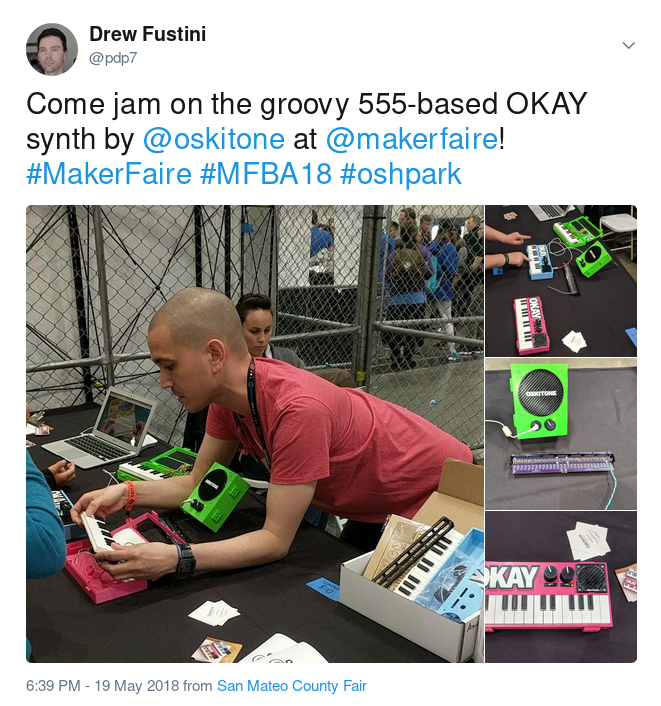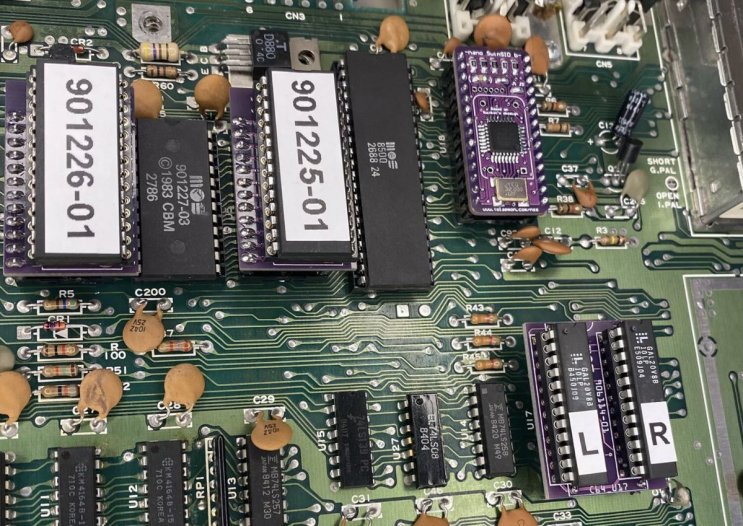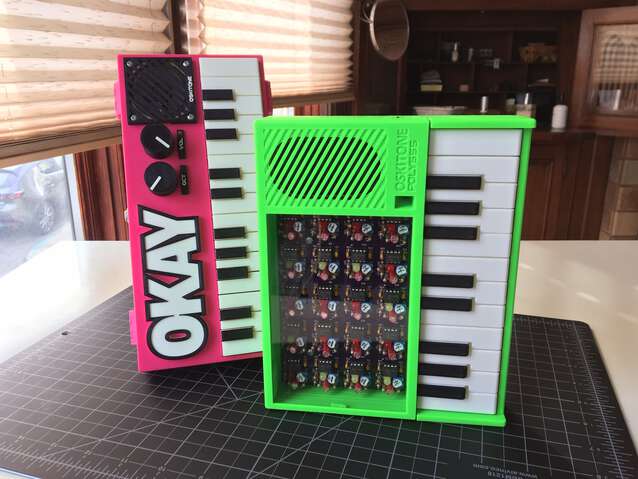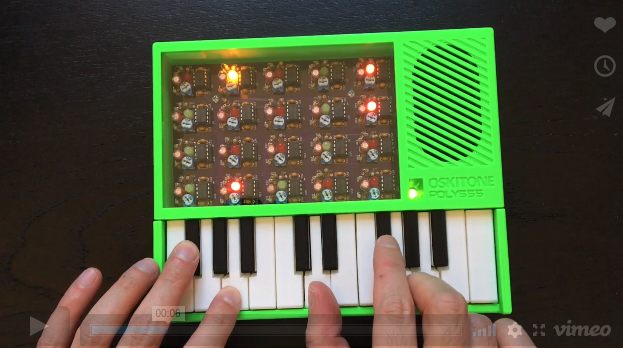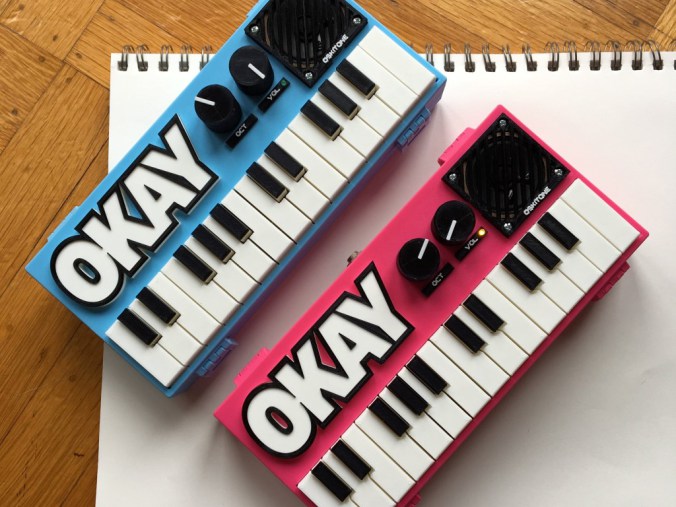We are big fans of the OKAY 2 Monophonic Synth Kit and we were excited to see the creator, Tommy at Maker Faire Bay Area 2018. From the Oskitone newsletter:

I spent last weekend at Maker Faire Bay Area, an annual event put on by the people behind Make Magazine. My exhibit stall was in between the Institute of Electrical and Electronics Engineers and the US Patent Office — pretty legit! I had synths out for people to play, gave demos and motivational speeches to kids, traded stickers for email addresses, and had some really great conversations with people.
Over three days, I talked to maybe 500 folks (+/- 100), which is a lot for an introvert! It was exhausting but incredible. I think I’m still processing it.
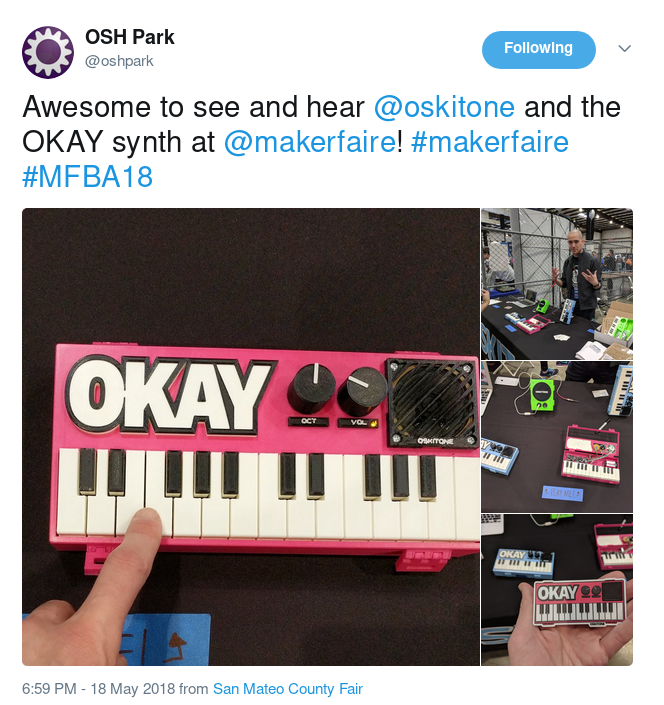
I met so many cool people… Makers, musicians, kids, parents, students, teachers, industrial designers, engineers, manufacturers, writers, editors, etc etc!
- I was happy to find a lesson outside electronics for the younger visitors: the piano keys on the OKAY 2 are actually levers — a mechanical “simple machine” already familiar to a lot of students. It was fun watching it “click” in their minds that the further back they tried to press the key, the more energy it required. (I also noticed a greater appreciation in parents for a more palatable educational takeaway, so I think they liked it too.)

Evil Mad Scientist stopped by with a 555 recreated with discrete components and swapped it out for the 555 timer in the OKAY 2. It was such a great, uneventful demo. “What will it do?” “Exactly the same thing.” Awesome!
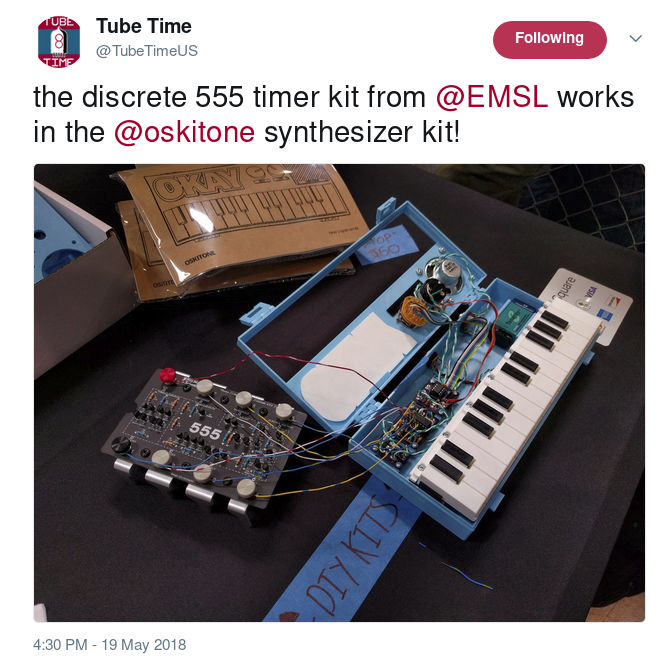
I got closer to perfecting my marketing. What started as a 5min dissertation talk on Friday became a 30sec elevator pitch by Sunday, saving my throat while seemingly having no negative sales effect. I may write a blog post on this.
There is no greater stress test for a physical product than 100 kids with candy smeared on their faces banging on it. I was relieved that the synths mostly stood up to the fatigue, but, of course, there’s room for improvement, which I now have a good idea on how to design. Thanks, kids! 🙂
